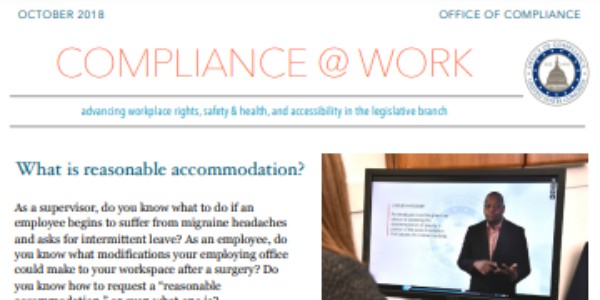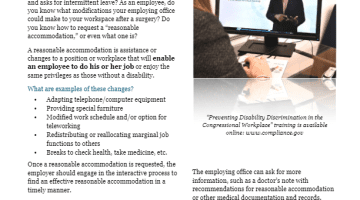As a supervisor, do you know what to do if an employee begins to suffer from migraine headaches and asks for intermittent leave? As an employee, do you know what modifications your employing office could make to your workspace after a surgery? Do you know how to request a “reasonable accommodation,” or even what one is?
A reasonable accommodation is assistance or changes to a position or workplace that will enable an employee to do his or her job or enjoy the same privileges as those without a disability.
What are examples of these changes?
- Adapting telephone/computer equipment
- Providing special furniture
- Modified work schedule and/or option for teleworking
- Redistributing or reallocating marginal job functions to others
- Breaks to check health, take medicine, etc.
Once a reasonable accommodation is requested, the employer should engage in the interactive process to find an effective reasonable accommodation in a timely manner.
What is the interactive process?
The interactive process is a dialogue that identifies the individual’s limitations and potential appropriate accommodation. An individual simply telling the employing office about the need for an adjustment at work because of a medical condition triggers the obligation of the office to investigate further. Nothing formal is required to initiate the interactive process.
The employing office can ask for more information, such as a doctor’s note with recommendations for reasonable accommodation or other medical documentation and records.
Even if the initial request for an accommodation isn’t feasible, the employer still must engage in a dialogue with the employee.

